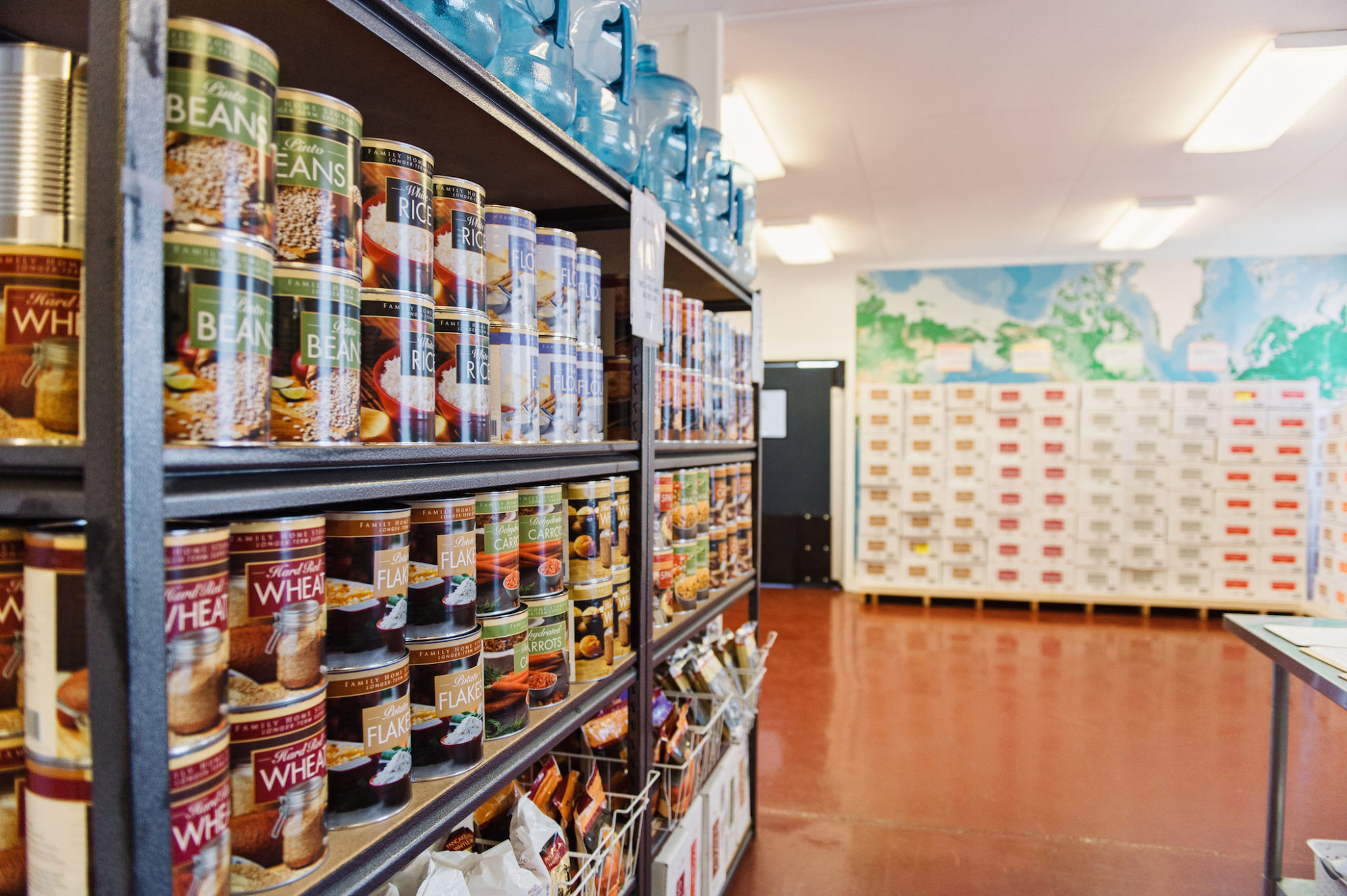Images by John Hook
“The revelation to produce and store food may be as essential to our temporal welfare today as boarding the ark was to the people in the days of Noah.” – Prophet and 13th president Ezra Taft Benson of the Church of Jesus Christ of Latter-Day Saints (also known as the Mormon Church, or LDS, for short)
“Sarah, there’s someone here for family planning,” calls out a man sitting behind a counter at the entrance to the LDS Bishop’s Storehouse, a food pantry for members of the Church of Jesus Christ of Latter-day Saints on O‘ahu who are struggling to make ends meet. Just off Kalihi Street*, the storehouse is tucked away in a squat building on the far end of a nearly empty parking lot. Sarah Barientos, a petite woman wearing a T-shirt and carrying a clipboard, greets me and leads me through double doors into a quiet, well-lit storage room that seems larger than the building would allow. A table at its center is covered with a grid of order forms for preserved goods, and floor-to-ceiling stacks of canned, dried, and boxed food line the walls. This is the Honolulu Home Storage Center, formerly known as the LDS Cannery, where members of the church and general public can buy Mormon-brand bulk foods at absurdly low prices ($2.75 for 5-1/2 pounds of hard red wheat and $9.75 for a pound of canned apple slices good for 30 years, folks).
Mormon families from Utah to Moloka‘i are encouraged to have a three-month supply of food, water, and money, with a goal of at least a one-year supply. “[The prophets’] revelation that heavenly Father had given them … tells us it’s important for us members to seek out self-reliance,” Barientos explains. “For me personally, [food storage] is just in case something should happen. Like, I use my own experience when I lost my job back in 2010 due to a work-related injury.” Today, she is a full-time volunteer at the center. An enthusiastic and sincere woman, Barientos bubbles over with excitement about getting the word out about the location, which is unknown even to some members on O‘ahu. Plus, Barientos declares, “This is open not only to the members, but also to the public. It’s the cheapest prices. The church actually pays for the shipping costs.”
While some families do not have a storage because it seems outside their budget or lifestyle, and a lack of landfall disasters has lulled nearly everyone in the islands into a sense of safety and comfort, they are reminded to prepare by way of an annual fair held at Brigham Young University-Hawai‘i, as well as occasional ward gatherings, when families sort disaster kits, toss out expired items, and make lists of what they need. Barientos maintains social media accounts for Honolulu Home Storage Center, including an Instagram account where she shares recipes featuring items from its rotating three-month supply.
Throughout the years, calls for members to heed warnings from the Book of Revelations—think plagues, wars, and famine in the time before the coming of Christ—rise and fall. Ezra Taft Benson, a portentous prophet (all LDS presidents, who are believed to have direct contact with God, are considered prophets) who survived the Great Depression and was president of the church from 1985 until he passed away in 1994 was a fiery promoter of self-reliance and home storage. At a general conference in 1965, he warned: “Should the Lord decide at this time to cleanse the church—and the need for that cleansing seems to be increasing—a famine in this land of one year’s duration could wipe out a large percentage of slothful members, including some ward and stake officers. Yet we cannot say we have not been warned.” In 2002, a letter from the First Presidency (the governing body of and highest ranking quorum in the church) took a decidedly softer approach to the encouragement of home storage: “Members should be prudent and not panic or go to extremes in this effort. Through careful planning, most church members can, over time, establish both a financial reserve and a year’s supply of essentials.”
For members like Barientos, any prophetic doom and gloom is accepted with a pragmatic air and a smile. Sure, pestilence or famine may arise. But more likely, the economy will dip or a Matson strike will cause others to rush Costco, and there Barientos will be, alongside other prepared members, ready to support the community.
“We have aquaponics, we’re trying to do all that,” says Barientos of a garden she maintains with her husband. After she lost her job, she says that she realized the importance of cultivating her own food, something her mother had done when Barientos was growing up. “We grow tilapia. … I think we may have enough now for maybe a six-month supply. And if things did come really bad, apocalyptic, I would be able to help my neighbors and my family, you know?”
The Honolulu Home Storage Center is located at 1120 Kalihi St. Follow them on Instagram @honoluluhomestoragecenter.
This story is part of our Apocalypse Issue.
*This story originally said Kalihi Avenue.

